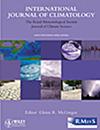Surface Temperature Influenced by Downward Longwave Radiation Is the Main Driver of Deglaciation in Central Asia
Abstract
The economy and society of Central Asia depend heavily on glacier meltwater from the Tien Shan as a water resource. However, recent global warming has altered the regional climate and melting patterns of glaciers, and an unprecedented trend of glacier retreat caused by rapid warming has been observed in the Tien Shan since the 1970s. While short-term monitoring and climate response of glaciers are well developed, less effort has been devoted to long-term historical fluctuations and physical mechanism studies based on climate models. Here we use a tree-ring reconstruction and melting energy simulated by an energy balance model to study the glacier mass balance of Urumqi Glacier No. 1 for the past 400 years, with the aim of better understanding the long-term changes in the relationship between this glacier and climate change during the summer ablation period. Our results demonstrated that surface temperature change driven by downward longwave radiation is the dominant factor affecting long-term glacier melting. Against the background of climatic warming and humidification in northwest China, the increase in precipitation is unable to offset the melting trend caused by rising temperatures. Further analysis revealed that the dominant driver of glacier melting is the warming effect of greenhouse gas forcing. Also, aerosol forcing causes glacier melting via direct and indirect radiation effects. These findings emphasise the importance of monitoring the regional glaciers, combined with climate change research, to establish a scientific foundation for water management and environmental conservation in Central Asia.




 求助内容:
求助内容: 应助结果提醒方式:
应助结果提醒方式:


